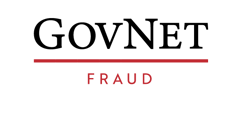In the battle against fraud, collaboration between the public and private sectors is proving to be a game-changer. This blog post explores the significance of fostering collaboration to strengthen partnerships between these sectors in fraud prevention, highlighting the benefits and strategies for effective cooperation.
Understanding the Need for Collaboration
Fraudsters often exploit gaps between public and private sector operations, making collaboration essential for comprehensive fraud prevention. By pooling resources, expertise, and data, both sectors can gain a more holistic view of fraudulent activities and develop more robust prevention strategies.
Benefits of Partnership
Partnerships between public and private sectors offer numerous benefits in fraud prevention. Private sector entities bring advanced technologies, analytical tools, and industry insights, while the public sector provides regulatory oversight, investigative authority, and access to vast datasets. Together, they can identify and address fraud risks more effectively than either sector alone.
Strategies for Effective Collaboration
Successful collaboration requires clear communication, mutual trust, and a shared commitment to combating fraud. Establishing formal partnerships, such as information-sharing agreements and joint task forces, can facilitate collaboration and streamline efforts. Additionally, fostering a culture of transparency and open dialogue ensures that both sectors are aligned in their goals and strategies.
Leveraging Technology and Data
Technology plays a crucial role in facilitating collaboration between public and private sectors in fraud prevention. Data-sharing platforms, secure communication channels, and analytics tools enable real-time information exchange and data-driven decision-making. By harnessing the power of technology, both sectors can enhance their fraud detection capabilities and respond more swiftly to emerging threats.
Case Studies and Success Stories
Highlighting real-world examples of successful collaboration can inspire and inform efforts in fraud prevention. Case studies showcasing joint investigations, information-sharing initiatives, and technology partnerships demonstrate the tangible benefits of collaboration in uncovering and deterring fraudulent activities.
Conclusion
Fostering collaboration between the public and private sectors is paramount in strengthening fraud prevention efforts. By working together, these sectors can leverage their respective strengths to identify, investigate, and prevent fraud more effectively. Through open communication, mutual trust, and strategic partnerships, they can create a united front against fraud, safeguarding public resources and upholding integrity in the process.

Nicole Lummis
After a career in Project Management, I realised how important it was for me to pursue a career with a more creative career path. I have a passion for creating engaging digital content whether through written content or the use of image, graphics or videos.



